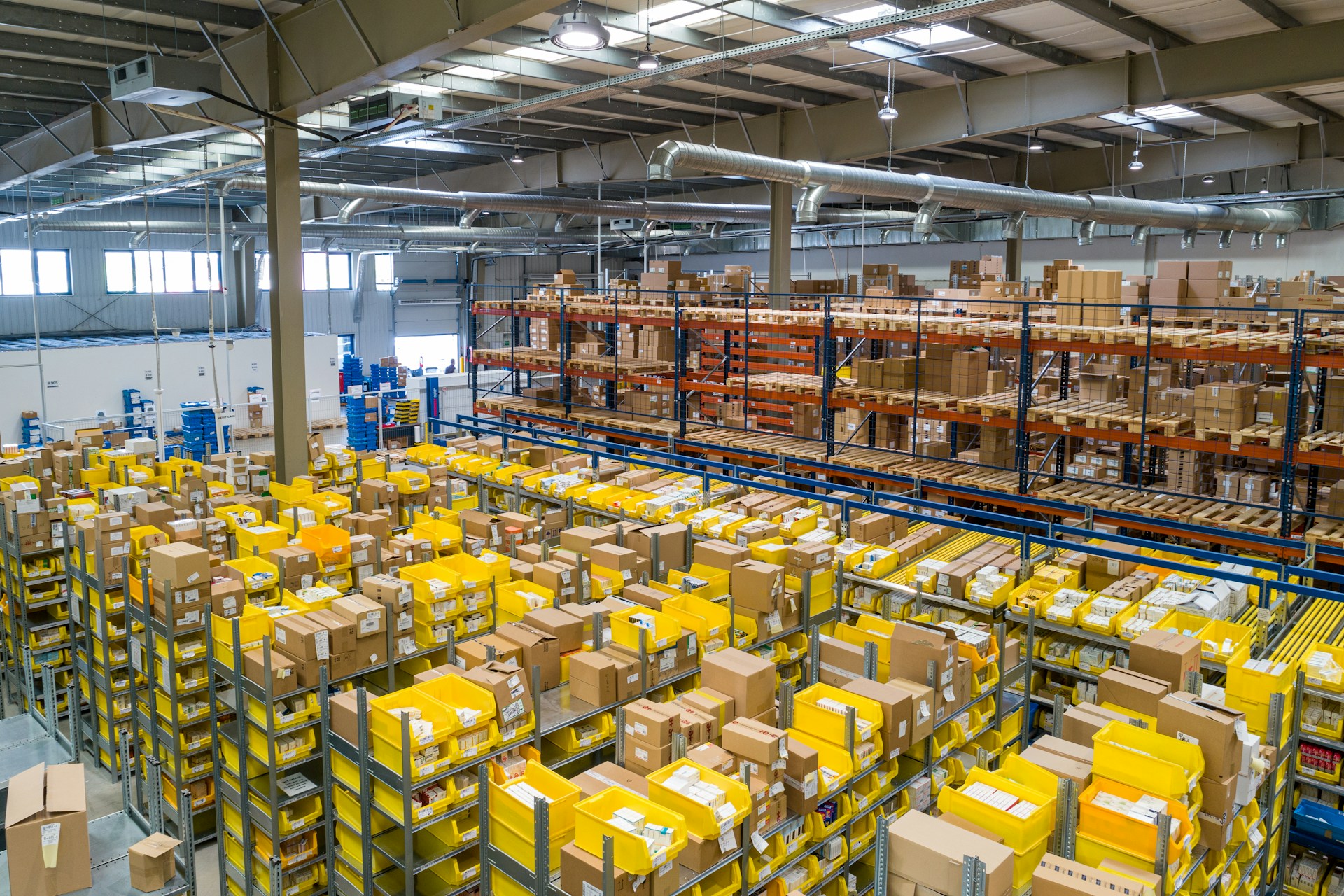The logistics industry is at the forefront of technological integration, with warehouses across the UK adopting innovative tech advancements to streamline operations, improve safety and save time. One such game-changing technology that’s garnering attention is the use of smart glasses. These wearable devices are equipped with augmented reality (AR) capabilities, transforming the way warehouses manage picking operations, order fulfilment, and supply chain management.
Smart Glasses: The Innovation at the Forefront
Smart glasses are the next big thing for warehouses and distribution centres across the UK. These devices, which look like regular eyewear, are equipped with cutting-edge technology that overlays digital information onto the physical world. The primary aim of these wearable devices is to facilitate a hands-free work environment for warehouse workers, enhancing their efficiency and operational safety.
Lire également : What’s the Role of AI in Customizing Wearable Fitness Programs for Athletes?
Initially, picking and packing in warehouses was a laborious task that relied heavily on manual processes. Workers had to sort through mountains of paperwork, cross-checking order numbers with information scribbled on clipboards. Now, this time-consuming task has been replaced by smart glasses.
These smart glasses allow workers to view picking instructions directly in their field of vision, significantly speeding up the fulfilment process. With an in-built camera and voice recognition technology, workers can confirm picks verbally or by looking at the barcode, eliminating the need for handheld scanners. It is a testament to how technology has overhauled the traditional warehouse operations.
A voir aussi : The latest trends and innovations in email verification
Augmented Reality and Warehousing: A Match Made in Logistics Heaven
Augmented reality stands out as a disruptive technology in the realm of logistics, with its potential to revolutionize warehouse operations. AR works by superimposing computer-generated images or data onto a user’s view of the real world, thereby enhancing their perception and interaction with their environment.
In the context of warehouses, AR can be accessed through smart glasses, enabling workers to visualize data relevant to their tasks without having to divert their attention or use their hands. For instance, workers can see route guidance for picking paths, product details, and location of items in their field of vision. This way, the technology not only expedites order fulfilment but also reduces the risk of picking errors.
Moreover, AR allows for real-time data updates. This feature ensures that workers are always up-to-date with the latest order changes, inventory level, and layout adjustments. By overlaying this digital information onto the physical world, AR provides a seamless way to manage logistics operations effectively.
Smart Glasses and Safety Measures
The use of smart glasses in warehouses is not just about speeding up processes and improving accuracy. A vital aspect to consider is the significant positive impact on worker safety. Warehouses are high-risk environments where safety must be paramount, and technology plays a key role in mitigating these risks.
Smart glasses, equipped with AR, can provide safety warnings and vital information directly in the worker’s line of sight. For instance, they can alert workers of potential hazards in their path, remind them of safety protocols, or provide real-time updates on equipment status. As a result, these devices can help prevent accidents and ensure that workers remain safe at all times. This technology, therefore, not only enhances productivity but also elevates the standards of safety within warehouse environments.
The Future of Warehouse Management Systems
Given the benefits of smart glasses and AR, it’s evident that these technologies will reshape the future of warehouse management systems. They represent a shift towards a more data-driven approach, with real-time data collection and analysis at the heart of operations.
Integrated with IoT, these smart devices can collect vast amounts of data, offering valuable insights into warehouse operations. This vast trove of data can facilitate better decision-making, optimize warehouse layout, improve inventory management, and bolster overall productivity.
However, the key to unlocking the full potential of these devices lies in the seamless integration with existing systems. Warehouses must ensure that these smart glasses can work in synergy with their current warehouse management software, ERP systems, and other operational tools.
While the integration might pose challenges, the benefits of smart glasses far outweigh these initial hurdles, making them an investment worth considering for any forward-thinking warehouse. As with any new technology, the adoption of smart glasses will require training and change management. But once fully implemented, they promise to revolutionize warehouse operations, paving the way for a more efficient, safe, and technologically advanced logistics industry in the UK.
The Role of Smart Glasses in Enhancing Warehouse Workers’ Experience
From streamlining picking processes to improving safety measures, smart glasses offer a wealth of advantages in the warehousing sector. But beyond these operational benefits, they also significantly enhance the experience of warehouse workers.
Smart glasses serve as a bridge between human workers and the digital world. They enable a hands-free work environment, allowing workers to concentrate on tasks without the need to juggle paperwork or handheld devices. Workers can access and view necessary information like picking instructions and inventory details effortlessly. Moreover, with voice recognition capabilities, smart glasses facilitate voice picking, further improving the efficiency and comfort of workers.
In the broad scope of warehouse operations, the use of smart glasses reduces physical strain and fatigue. With the help of augmented reality glasses, workers no longer have to continuously refer to printed lists or computer screens away from their work area. The technology brings the information directly to them, reducing the need for excessive movement and potential physical strain.
Furthermore, smart glasses can create a more engaging and interactive work environment. With the potential of integrating gaming elements – a concept known as gamification – the routine tasks can be made more enjoyable and motivating. This not only improves worker morale but can also increase productivity and accuracy in the warehouse operations.
At the heart of this transformation lies the concept of smart warehousing, a vision that relies heavily on cutting edge technological solutions to revolutionize the supply chain and improve warehouse management.
The Impact of Smart Glasses on the Supply Chain and Logistics Industry
The integration of smart glasses into the warehousing operations signals a significant shift in the supply chain and logistics industry. By merging the physical and digital worlds, these wearable devices are setting a new standard for efficiency, safety, and worker experience.
The real-time data collection and analysis capabilities of smart glasses can provide invaluable insights into warehouse management. By tracking picking processes, inventory management, and worker efficiency, warehouses can identify areas for improvement and implement effective strategies. This is a game-changer in the supply chain, where even the smallest efficiency gains can translate into significant cost savings.
Moreover, the wide adoption of smart glasses could trigger a ripple effect across the supply chain. For instance, real-time visibility of warehouse operations could facilitate better coordination with suppliers, transport providers, and retailers. It could lead to more accurate demand forecasting, efficient inventory management, and improved customer service.
While the current focus is on the use of smart glasses in warehouses, the potential applications of this technology extend far beyond. From manufacturing to retail, smart glasses and AR could revolutionize the way businesses operate, leading to the emergence of a truly connected, efficient, and resilient supply chain.
Conclusion: Embracing the Future of Warehousing Operations
The integration of smart glasses into warehousing operations is a clear indication of the direction in which the logistics industry is moving. Embracing this cutting-edge technology signifies a leap towards a more digitized, efficient, and safe work environment. It also presents an opportunity to enhance the role of human workers, by equipping them with tools that not only make their jobs easier but also more engaging.
Admittedly, the adoption of smart glasses and AR technology comes with challenges such as integration with existing systems and worker training. However, the benefits they offer, from streamlined order picking to improved warehouse management, make them a worthy investment.
As we move forward, it’s important to remember that the success of these wearable devices lies in their effective integration and the willingness of human workers to embrace these changes. The future of warehousing operations undoubtedly lies in technology, and smart glasses are poised to be at the forefront of this exciting transformation.











